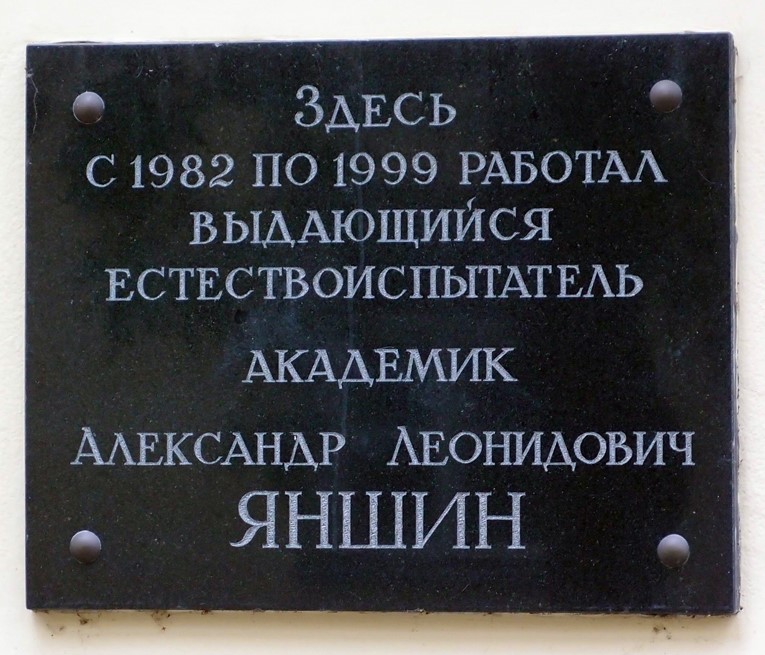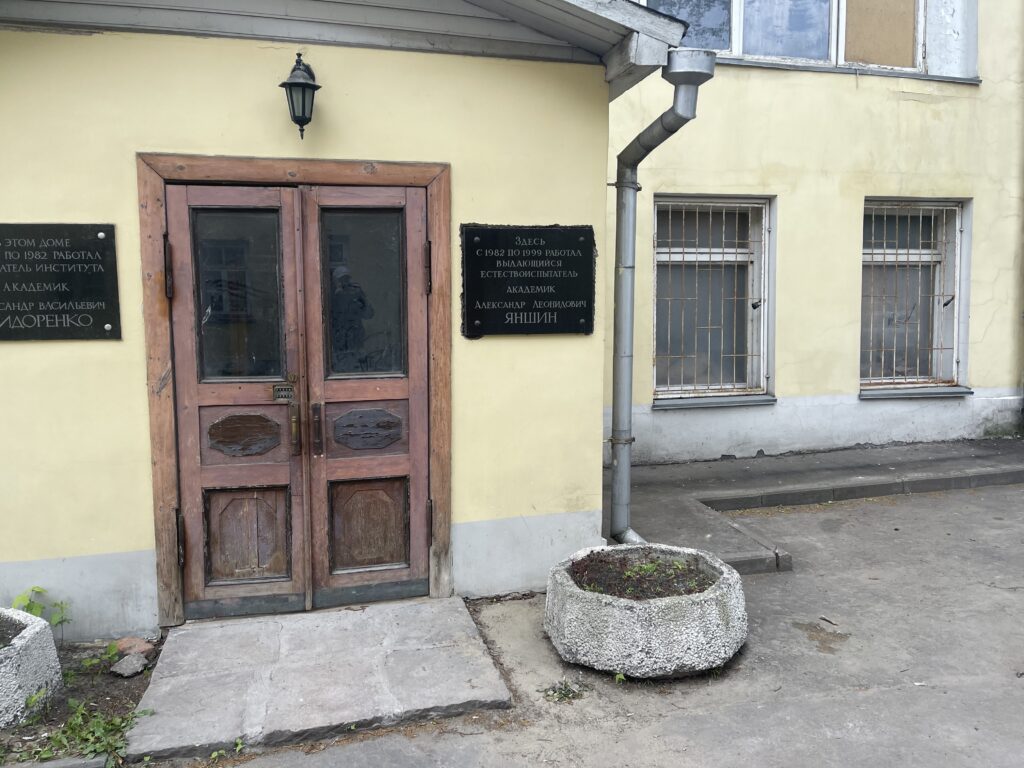Aleksander Leonidovich
Yanshin
1911-1999

Aleksander Leonidovich Yanshin was an Academician, the Deputy Director of the Institute of Geology and Geophysics of the Siberian Branch of the USSR Academy of Sciences, Novosibirsk. He was born in the city of Smolensk, the Smolensk province (now the region). In 1928 he finished the school at the Pedagogical Faculty of Smolensk State University and in the same year he entered the geological Faculty of Moscow State University, and graduated from it in 1932. In 1930 he moved to Moscow Geological Exploration Institute and continued his studies. He considered it expedient to combine his studies with practical activities, as a collector, geologist, head of the party, he worked in the mining and Geological Department of the All-Union Scientific Institute of the Supreme Economic Council of the USSR on Fertilizers. Since 1936 he was a Senior researcher at the Geological Institute of the USSR Academy of Sciences. His activity in scientific and practical activities, the desire to deepen the knowledge gained during his studies, contributed to his exceptionally rapid scientific growth. In 1937 A.L. Yanshin was awarded the degree of the Candidate of Geological and Mineralogical Sciences without defending his dissertation. In 1938, at the age of 27, he became the editor of the geological department of the Small Soviet Encyclopedia. In 1941 A.L. Yanshin, as a part of the People’s militia division, volunteered for the front of the Great Patriotic War; but was soon recalled to search for minerals. During the years of the war, he was engaged in the evaluation of deposits of various minerals, the search for artesian waters. He participated in the creation of many large geological institutions – departments, trusts. In 1944 he was awarded the Order of the Red Banner of Labor for the successful fulfillment of Government tasks in the field of providing industry with reserves of valuable mineral raw materials. In 1945, for achievements in the field of industry and science, he was awarded the Order of the Badge of Honor. After the Victory, he continued to engage in scientific activities. In 1953 he was awarded the degree of the Doctor of Geological and mineralogical Sciences, defended his doctoral dissertation “Geology of the Northern Urals”. Since 1956 he was the Head of the Laboratory of the Geological Institute of the USSR Academy of Sciences. In 1958 a new stage of the scientist’s life had begun – he moved to Novosibirsk to work in the newly created Siberian Branch of the USSR Academy of Sciences. Since 1958 he was the Deputy Director of the Institute of Geology and Geophysics of the Siberian Branch of the USSR Academy of Sciences. At the same time, he taught at Novosibirsk State University, since 1979 he was the Head of the Department of General Geology and Geology of the USSR in the same place. The main works were devoted to the problems of the tectonic structure and development of the Southern Urals, the Caspian Depression, the Turan Plate, and the southern margin of the Siberian Platform. In 1969 he was awarded the USSR State Prize for his participation in the creation of the “Tectonic Map of Eurasia”, in 1978 – for the 15-volume work “The History of the development of the relief of Siberia and the Far East”. For the first time, he developed and applied a technique for reconstructing buried Paleozoic structures by studying and tracing inherited platform dislocations. He developed a stratigraphy of Paleogene deposits of the Aral Sea region. The role of A.L. Yanshin in the discovery of deposits of phosphorites, potassium salts, bauxite, combustible gases and other minerals is significant. Yanshin discovered a large iron ore basin in the Aral Sea region, the Krivlensk brown coal deposit, which was the beginning of the development of the South Ural brown coal basin, the Gilyansk potash salt deposit and artesian basins in Kazakhstan. He justified the direction of oil and gas exploration in the Aktobe region, as well as potash and phosphate raw materials in Siberia and Mongolia. These searches ended with a brilliant success.
Address: Moscow, Staromonetny lane, 22, p. 1

